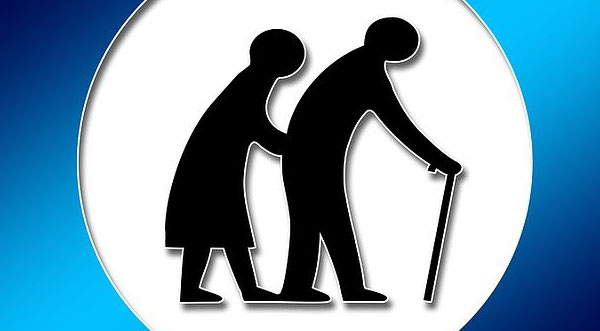How to Identify and Stop Nursing Home Abuse
By Space Coast Daily // April 13, 2021

Nursing home abuse is a threat to the psychological and physical well-being of a resident. Victims can experience a wide range of health-related problems.
This is, in fact, a social problem that touches on important issues as human rights and public health.
Some indications of abuse and neglect are more visible than others. Physical signs like bruises and scrapes are easier to spot than psychological ones. For the latter look for changes in behavior. It will be easier to notice that something is wrong if you keep in close contact with your loved one.
Once you have identified that a resident has suffered from nursing home abuse, there are several ways you can proceed. Depending on the specifics, you can report the incident to the nursing home administration. Furthermore, you can get in contact with specialized support groups and elderly care agencies. If you decide to pursue legal action, make sure to contact a qualified lawyer.
What is Abuse
The elderly should be protected and cared for in a nursing home facility and how to choose a nursing home is essential. Still, they are exposed to the risk of abuse and neglect by staff members and residents alike. Abuse is an intentional act directed at an individual that causes pain or suffering. In the case of the elderly, it is usually committed by a person whom the victim trusts. There are several forms of abuse, which we will cover below.
Physical Abuse
The use of force against a resident that causes discomfort or pain qualifies as physical abuse.
Some common signs to look out for are cuts and bruises, broken bones, or burns. If you notice any injury on a resident, ask for explanations both from them and the staff. Frequent hospitalization can also be an alarm that something is not right.
Psychological Abuse
Unlike the previous entry, psychological abuse inflicts distress and suffering. These are mental or emotional and thus might be harder to identify. The perpetrator can use their power to scare, isolate or cause embarrassment to a resident. A victim may display mood swings, depressive symptoms and can be more withdrawn.
Verbal Abuse
Any distress caused to residents through verbal acts. This can be just as damaging as the previous two forms of abuse. Some experts consider verbal abuse a subtype of psychological abuse. A wide range of actions can qualify for this category, including raising the voice, name-calling, and swearing at a resident.
Sexual Abuse
This refers to any sexual act or interaction that is not consensual by all parties involved. A diagnosis of dementia or Alzheimer’s and other similar conditions can legally prevent residents from consenting to such acts.
Financial Abuse
Residents might also be targeted for economic gain. This form of abuse includes any financial activity made on behalf of an individual without their consent. Residents with Alzheimer’s, for example, may be even more exposed to such threats. Keep an eye on the property and finances of your loved one. If you notice any irregular activity, start to investigate more.
What is Neglect
Neglect is a somewhat passive form of abuse. It derives from the failure to assure the general basic needs of a resident. What separates neglect from types of abuse is intentionality. Neglect is usually attributed to carelessness and indifference. On the other hand, abuse is more driven by an intent. Actions are clearly directed against the victim.
Medical Neglect
Medical neglect is the ongoing carelessness regarding the health of the resident and the lack of ensuring the associated needs. This can encompass a great variety of actions, like failing to offer a patient their medication or not taking action when there is a medical emergency.
Neglect of Basic Needs
This includes a lack of action in securing that residents are living in proper condition, respecting hygiene standards and their basic needs. A resident might not be offered proper bathing, or his clothes might not be washed and changed regularly, he might also be exposed to food that has expired, and the list can go on.
Social Neglect
The basic needs of an individual are not strictly physical, these are also emotional, psychological, and social. Care providers from nursing homes are not exempt from this. One of the most common forms of this type of neglect is for the staff to not facilitate opportunities for residents to interact with each other and other people.
How to Identify Abuse and Neglect
Neglect and abuse leave signs on their victims, one just needs to look close enough. That is why it is crucial to check in regularly with your loved one. In-person visits are important because they can create a setting for you to see some of the physical signs of trouble. Plus, it might be easier for the resident to open up to you in person. However, frequent phone calls can help you detect subtle changes in behavior or thought patterns easier.
Here are some of the most common physical signs to look out for:
■ Visible problems with personal hygiene
■ Weight loss
■ Injuries
■ Bedsores
■ Burns or other marks
Some of the most common psychological and behavioral signs of neglect are:
■ Trouble sleeping
■ Withdrawal
■ Avoiding behavior
■ Sudden onset of pessimism
■ A general sense of hopelessness
How to Stop Nursing Home Abuse and Neglect
If there is a possibility of neglect or abuse in a nursing home, it is important to take action. Here are the main steps you can take to help stop the negative behavior and protect the resident:
Help Residents Open up
Often, residents might have trouble opening up about their negative experiences to their children. As a parent, their instinct to protect their child might override their self-conservation instinct. However, if you suspect that something might be wrong, try talking to other residents and the staff. You might pick up some extra hints. Also, consider asking a close friend of your loved one to speak with them. They might open up easier to another person.
Report the Incident to the Nursing Home Administration
Once you have determined that there was neglect or abuse, you can talk to the nursing home administration on the victim’s behalf. However, whether or not this is a wise step, depends on a lot of things, mainly the nature of the abuse and who the perpetrator was.
Reach out to Experts
Furthermore, you could reach out to an elderly care agency or call a phone line that is dedicated to the issue. The experts who work there have experience dealing with such cases, and they can offer you precious guidance on how to proceed.
Document the Case
Start documenting evidence as soon as possible, time is of the essence. Some marks might disappear over time, like bruises, for example. Take photos of all injuries and put them in a file. Also, consider talking to witnesses, if there are any. In case there are physical signs, you can also consider scheduling an independent doctor’s appointment and save the resulting documents.
Contact a Lawyer
If you decide to pursue legal action, make sure you choose a nursing home abuse lawyer since they are specialized in this domain. Also, the documentation you have gathered will come in handy for building a case. An attorney will fight for you and your loved one to receive proper compensation for their experience in the nursing home.
Safe Haven
The best way to identify abuse and neglect in a nursing home is by keeping in contact with a resident. Some marks are physical and can be easily seen, but behavioral signs are more challenging to notice. By creating a safe environment for a victim, you can encourage them to open up about their experience.
There are many ways you can take actions to protect a resident from further abuse, prevent such actions from happening to others, and possibly secure compensation for the victim. Taking action will help make nursing homes what these are meant to be, a safe haven.
About the Author

Kyle Hambright is a passionate writer proudly representing Pintas and Mullins Law Firm. He has focused his legal career on personal injury cases, and throughout his practice, Kyle has helped people from all walks of life. This determination transpires in his writings as well. His articles translate the complex web of legal jargon into accessible text. Readers not only gain a firm grasp on theory, but they also learn how to put it into practice.












